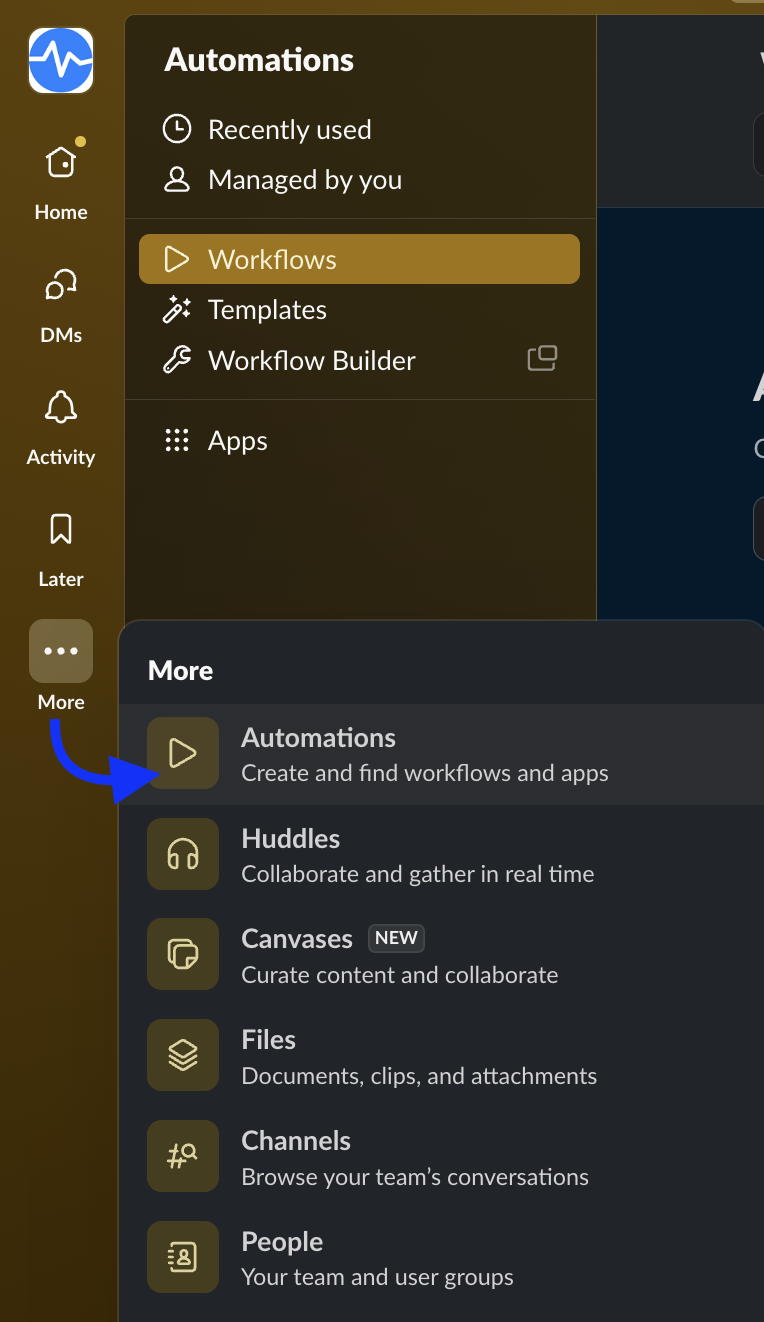Slack Workflow Builder with Visualping
Slack Workflow Builder is a powerful tool that allows you to automate tasks and streamline communication within your team. We recommend using our Slack App to send notifications to public Slack channels. However, if you are interested in sending alerts to a private channel, want a custom alert format, or need to execute other custom automation, we suggest using the Slack Workflow Builder with Visualping Webhooks.
In this lesson you'll learn:
How to create a Slack workflow with Visualping Webhooks
You can refer to Slack's official workflow tutorial for the up to date steps.
Step 1:
To create a new workflow in Slack Workflow Builder, log in to your Slack workspace on your desktop and hover over More, then select Automations.
Step 2:
Click Workflows on the left-side menu and click on Create Workflow at the top right.
Step 3:
Select From a webhook.
Step 4:
When integrating a webhook with Slack Workflow Builder, webhook variables can be defined to pass dynamic data between the two systems. Once the webhook variable is defined, Slack can access its value and use it to perform specific actions.
Click on Set Up Variables and enter the specific Key you want to use in your workflow. See below for a list of key options.
Visualping Webhooks variables:
Key | Data Type | Description |
job_id | Text | Unique job ID |
workspace_name | Text | Job workspace |
url | Text | Job URL |
description | Text | Job Title |
datetime | Text | The time notification was sent. |
preview | Text | PNG file of change. |
original | Text | PNG file of original. |
change | Text | Change percentage. |
view_changes | Text | Link to the job in the dashboard. |
text_changes | Text | Shareable notification link. |
added_text | Text | A string of added text. |
removed_text | Text | A string of removed text. |
summarizer | Text | A summary by AI Summarizer |
important | Text | True or False by AI Analyzer. Only for customers with AI Analyzer enabled. Contact us for more information. |
Step 5:
Once you have added the webhook variables, your workflow editor should display them in the appropriate fields. It should look something like this. Click Continue.
Step 6:
Now that we have our webhook variables configured, we can tell Slack what to do with them. To add a step to the workflow, click Add steps and select the step you want in the right-side panel. You can choose from a variety of systems and actions to automate. For this tutorial, we'll send a message to a Slack channel by selecting Messages > Send a message to a channel.
Step 7:
Next, select the channel which can be either a public/private channel. In addition, you have the option to customize the message by including the webhook variables that were previously configured. To do this, simply click on the "insert a variable" button. Once finished, click Save.
Step 8:
Click the Finish up button to edit the workflow details and click Publish.
Step 9:
To find the unique webhook URL for this workflow, click on Starts with a webhook sectionand click Copy Link for the Web request URL. This is the final step in the Slack Workflow Builder.
Step 10:
Head to your Visualping dashboard. Open the job settings for the job you want to edit then click the Notifications tab. Select the Webhook option and paste the Web request URL from Slack and click Save. You can test the integration by clicking on Test. This step completes the Slack Workflow Builder with Visualping.












